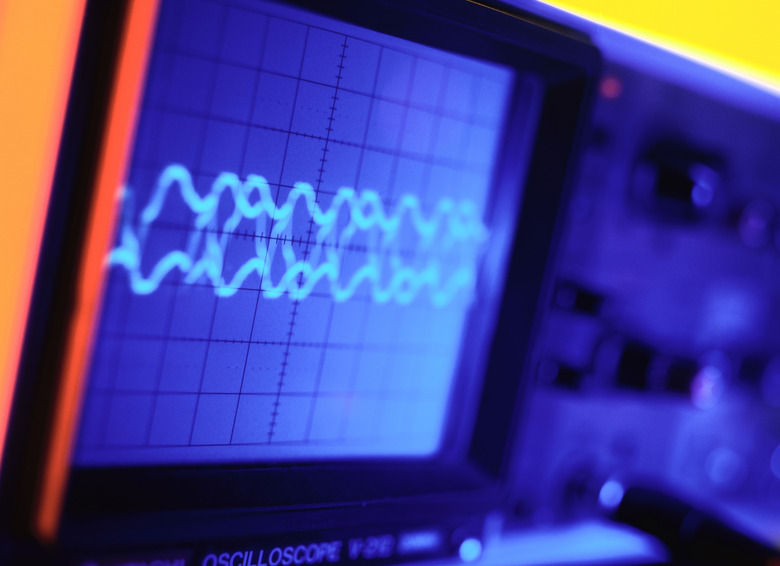What Causes Reverse Polarity In AC?
You can use electrical power to perform physical work, to transmit data signals from one point to another, or to convert it into other energy forms such as heat and light. The two basic types of electrical power are direct current and alternating current. Direct current, or DC, flows in one direction only and maintains the same polarity. Alternating current, or AC, reverses polarity at a specified period. This polarity switch is a product of the AC power generation process.
AC Power Generation
AC Power Generation
An electromechanical device that produces AC power is called an alternator. An alternator produces AC power by producing a transient electromagnetic field and then inducing this field across a set of inductor windings. These windings convert the transient electromagnetic field into electricity.
Why Transient Fields
Why Transient Fields
For an inductor to convert an electromagnetic field into electricity, the field must be transient. If a static magnetic field is applied across the windings of an inductor, the inductor will only produce a small spike of DC power, followed by a quick — less than 1 second — reduction in power.
Field Reversal
Field Reversal
When an electromagnetic field changes polarity, the result of this change is a reversal of the direction in which the electrical current flows. The period at which the field changes polarity is also the period at which the current changes direction. This period is measured in cycles per second, or Hertz.
Why Electric Current Reversal
Why Electric Current Reversal
Direct current cannot flow through some electric components, such as capacitors and transformers. The constantly reversing polarity of an AC signal can enable you to use these components to block DC power from entering one part of an electrical circuit. Since a transformer is made of two inductors wrapped around a common core, a transformer will be able to step up or step down only an AC signal, not DC power.
References
- "Principles of Electric Circuits"; Thomas Floyd; 1997
- The Electronics Club: AC, DC and Electrical Signals
- Georgia State University: AC Motors and Generators
Cite This Article
MLA
Sandoval, David. "What Causes Reverse Polarity In AC?" sciencing.com, https://www.sciencing.com/causes-reverse-polarity-ac-10041857/. 24 April 2017.
APA
Sandoval, David. (2017, April 24). What Causes Reverse Polarity In AC?. sciencing.com. Retrieved from https://www.sciencing.com/causes-reverse-polarity-ac-10041857/
Chicago
Sandoval, David. What Causes Reverse Polarity In AC? last modified March 24, 2022. https://www.sciencing.com/causes-reverse-polarity-ac-10041857/
